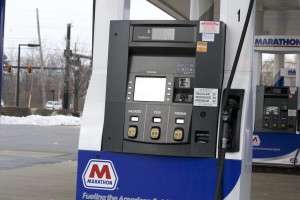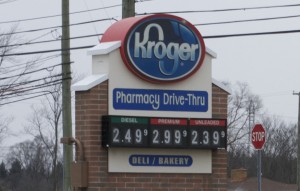Even with a chunk of the nation’s refining capacity closed and new hurricanes churning in the Atlantic Ocean, gasoline prices have headed down this week thanks to the end of the summer driving season and a heavy draw down by retailers on the record inventories.
As states recover in the South and Southeast from Hurricanes Harvey and Irma, motorists in 45 U.S. states are paying less for a gallon of gas this week. At $2.62, national gas price average is the cheapest in 14 days and five cents less than last week, according to AAA.
“Gas prices are dropping as the situation with refineries, pipelines and gasoline deliveries is positively progressing,” said Jeanette Casselano, AAA spokesperson. “It looks like pump prices will continue on this declining trend into the coming weeks as the regions affected by Irma and Harvey resume normal operations,” she said.
Two more hurricanes swirling in the Atlantic are not expected make landfall in the continental U.S. although Maria already has done significant damage in the Caribbean.
(Gas prices leveling off after Hurricane Harvey. For the story, Click Here.)

Gas prices have dropped nationally as the impact of Hurricanes Harvey and Irma are being dealt with.
AAA said motorists in the Midwest are seeing the biggest drops in gasoline prices as Indiana, Michigan and Ohio dropped by the double-digits inside of seven days. Meanwhile, some states in the West Coast and Rockies are seeing gas prices increase.
As gas prices drop for the majority of the country, so does the nation’s gasoline inventory. The latest federal Energy Information Administration indicates the latest draw of 8.4 million barrels per days as the highest on record, much of which can be attributed to motorist fueling up in the droves in anticipation of Hurricane Irma.
“Next week’s EIA report may bring another record-demand level as a continued result of Irma, but demand is expected to sharply decline across the country by the end of September,” added Casselano.
The Gulf Coast saw one of the largest gasoline inventory drops on the week – 3.7 million barrels, according to EIA data.
The massive-buying in Florida and other southeast states ahead of Irma’s lent to the multi-million barrel draw. Last week, at $2.73, Florida’s saw its highest gas prices since December 2014. The spike came as many gas stations faced power outages, which have persisted in some parts of the state where more than 400,000 customers don’t have electricity and roads impassable roads.
Shipments of motor fuel, however, are arriving, leading to re-opening of many stations throughout the state.
(Click Here for details about the national average fuel economy dropping.)
Progress is being made the Gulf Coast around Houston and Beaumont, Texas, which is at the heart of the U.S. oil and gas industry.
Department of Energy reported a total of six Gulf Coast refineries are operating at reduced rates, which is one more refinery than last week. These six refineries account for 13% of refining capacity in the U.S. Five refineries continue to operate at reduced rates and three remain shut down, which represents a total of 10 percent of U.S. refining capacity.
Overall, refinery utilization was down, which is understandable as refineries in the region are operating at about 61% of capacity, as reported by OPIS.
(To see more about the White House releasing some of the strategic reserves, Click Here.)
Last week, the price per barrel on global markets closed at $49.89. U.S. crude prices remained below $50 per barrel at the beginning of the week. Since Hurricanes Harvey and Irma hit the U.S., oil prices have not spiked like gasoline prices did despite a quarter of the refining capacity in the country being offline due to Harvey, AAA noted in its weekly report on gasoline prices.


Good thing I brought this article to the gas pump instead cash or looking at the gasbuddy map. I mean seriously, do you really want your credibility tied to this?
Sadly, Bob, as I have personally learned in Michigan, regional and local prices can go all over the place. I have seen Michigan prices jump 20 cents while the rest of the country falls 20. Check out AAA’s gas data or GasBuddy and you will see that after a massive, month-long spike, gas prices, on a national basis, have come down quite a bit over the last week. They’re still well above pre-hurricane numbers but are clearly tumbling.
Paul E.